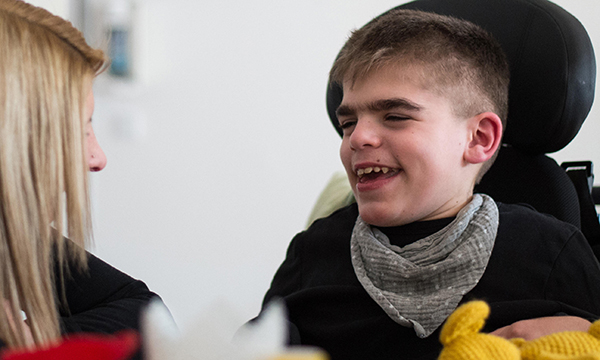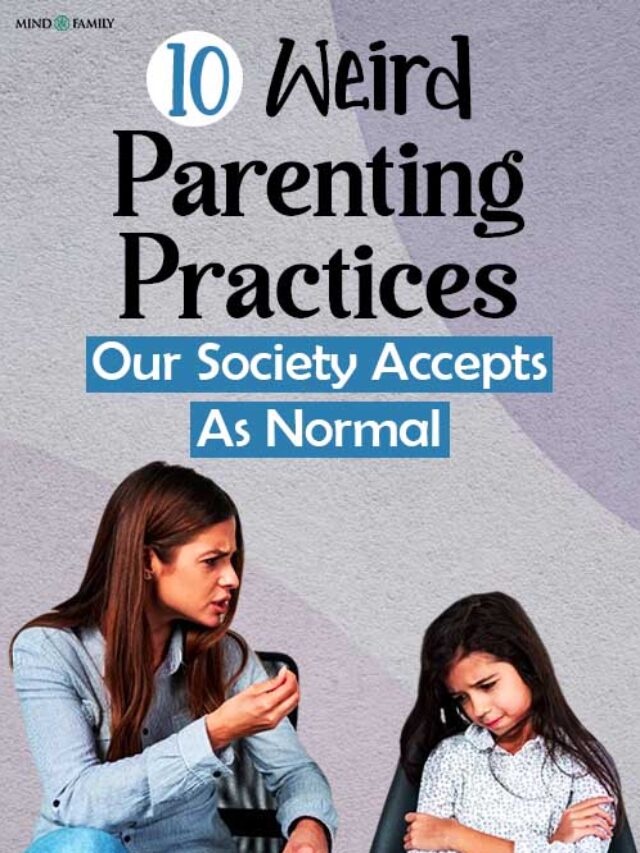Sanfilippo genetic disorder is a rare sickness that affects children’s metabolism. It is a health problem where the body can’t properly break down certain substances.
Kids with Sanfilippo syndrome usually seem healthy at birth. But as they grow, they might start having trouble with talking, learning, and sleeping. Finding out if a child has Sanfilippo syndrome can be hard. Doctors use special tests like checking urine and examining skin and blood cells.
Through this article, we want to increase awareness about Sanfilippo syndrome. We will discuss what causes it, what it’s like to live with it, how doctors diagnose it, and what treatments are available.
We also want to show why it’s so important to support families dealing with this syndrome. Understanding Sanfilippo Genetic Disorder is crucial for better management and care. Let’s take a comprehensive look!
Sanfilippo Genetic Disorder: Grasping The Concept!
Sanfilippo syndrome is a genetic disorder also called type III mucopolysaccharidosis (MPS III) which is uncommon among children. It is one of the lysosomal storage disorders disease group.

Essentially, it results from an individual’s inability to metabolize some types of complex sugars and this leads to their build-up in different body tissues including the brain.
The disorder is divided into four subtypes, each associated with a different genetic mutation and resulting in the deficiency of a specific enzyme. These subtypes are:
- MPS IIIA
- MPS IIIB
- MPS IIIC
- MPS IIID
This disease is not too widespread. In some areas, it affects one child out of every fifty thousand to two hundred thousand births. How long an individual with this illness lives varies on which subtype they have and how intense it can be.
Read more here: What Are Hormones? Types, Functions & Disorders
Exploring Sanfilippo Disease Symptoms
Sanfilippo disease is characterized by varying ages of onset and severity of symptoms and it’s important to understand these signs for early diagnosis and management.

1. Coarse Facial Features
Children with Sanfilippo disease symptoms present a unique facial look that becomes more pronounced with growth. They may have wide eyebrows, dense eyelashes, or harsh, scaly hair. Sometimes, the skin on their faces can become thicker or rougher than usual.
2. Skeletal Issues
Sanfilippo disease can cause difficulties in bone growth as well as joint conditions in children like stiffness and joint pain making movement difficult and interfering with normal daily activities.
3. Hepatosplenomegaly
This term refers to the enlargement of the liver and spleen which results in abdominal swelling (ascites) sometimes associated with discomfort. Such enlargement is caused by storage materials accumulation within these organs hence causing their dysfunction over time.
4. Macrocrania
Macrocrania signifies an abnormally enlarged size of the head commonly found in children with Sanfilippo disease. This can be attributed to an increase in intracranial pressure due to accumulated substances in the brain.
5. Hearing Loss
Progressive hearing loss is a common feature of Sanfilippo disease, ranging from slight hearing problems to profound hearing impairment that can necessitate the utilization of listening devices or similar supportive measures.
6. Cognitive Impairment
The most prominent characteristic of MPS III is the progressive breakdown of the brain resulting in mental retardation that onset during infancy. It appears normal then cognitive delays emerge mostly between 1-3 years old.
Read More: Cognitive Decline: 10 Warning Signs, Causes And Strategies
7. Behavioral Challenges
Children diagnosed with Sanfilippo syndrome often exhibit behavioral problems like aggression hyperactivity sleep difficulties, etc., hence caregivers struggle to manage such situations which necessitate special behavior therapy.
8. Progressive Loss of Skills
The child’s cognitive and motor functions show observable decline as the illness advances leading to both intellectual disability and regression such as communication problems, walking troubles, and swallowing difficulties that could lead to the child’s dependence.
Sanfilippo disease symptoms may vary from one child to another with varying severity and progression. In severe cases, life expectancy may be in the early teens, while milder forms of the disease can have a longer lifespan, sometimes into the sixth decade.
Read More: How to Raise a Child with Autism: 5 Vital Tips and Examples!
What are the Causes of Sanfilippo Genetic Disorder?
Sanfilippo Genetic Disorder is brought about by the insufficiency of certain enzymes that carry out molecule disintegration in the body.

The causes are as follows:
1. Enzymatic Deficit
Sanfilippo Syndrome is divided into four subtypes (A, B, C, and D), each with a characteristic enzyme deficiency. The following enzyme deficiency can cause Sanfilippo Genetic Disorder.
- Subtype A is linked with heparan N-sulfatase deficiency.
- Subtype B is associated with alpha-N-acetylglucosaminidase deficiency.
- Deficiency of several enzymes characterizes subtypes C and D.
2. Glycosaminoglycan Accumulation
Glycosaminoglycans accumulate due to enzyme defects; specifically, heparan sulfate. They get stored in cells and tissues all over the body and this leads to cellular dysfunction and ultimately damage.
3. Genetically passed on
Sanfilippo Syndrome is inherited as an autosomal recessive trait implying that for a child to be affected both parents should have one copy of the defective gene. Both parents being carriers means there is a 25% chance in each pregnancy that the child will inherit two copies of the defective gene and suffer from Sanfilippo Syndrome,
There have been ongoing studies aimed at developing therapies that address underlying enzyme deficiencies to improve the quality of life for those with Sanfilippo Genetic Disorder.
Read More: New Dad Stress? 10 Alarming Signs And Effective Tips on How To Manage It
Sanfilippo Syndrome Prognosis: What Comes Next?
The Sanfilippo Syndrome Prognosis is determined by life expectancy. Regrettably, individuals diagnosed with Sanfilippo normally have shorter lives than the general population.

The Sanfilippo Syndrome is progressive; as such, symptoms are likely to grow worse with time. Nevertheless, different people experience different rates of progression even if they have a similar type of condition.
As the illness progresses, quality of life may be severely affected in those living with Sanfilippo syndrome. Communication difficulties, immobility, and problems conducting everyday activities can lead to complex needs that must be met through careful and supportive services.
There is no known cure for this disorder although scientists are investigating possible treatments for underlying enzyme deficiencies and symptomatic relief. Timely diagnosis and intervention can also promote better overall management of the condition.
It might be a tough trip when considering the Sanfilippo syndrome prognosis but at least there is hope that awareness, advocacy, and continuous studies can lead to better outcomes tomorrow.
Improving Life Expectancy For Sanfilippo Syndrome
The challenge of improving the life expectancy for Sanfilippo Syndrome is complicated by the nature of this uncommon genetic disease.
Although there is no cure yet and the condition is progressive, several strategies and ongoing scientists are aiming at improving the quality of life and probably prolonging the lifespan of individuals suffering from Sanfilippo Syndrome.
Below are some areas to consider:
1. Early Diagnosis and Intervention:
An early diagnosis of Sanfilippo Syndrome through genetic testing permits early intervention and management. Early therapeutic steps and supportive care may slow the symptoms’ progress and enhance results.
2. Symptomatic Treatment:
This can be directed toward specific symptoms such as behavioral problems, seizures, or sleep disorders which can help in one’s general well-being. Physical and occupational therapy may help keep mobility and function intact.
4. Clinical Trials and Research:
Being part of clinical trials and research studies allows access to possible experimental treatments or therapies. New ways to slow down this illness might come out if we understand what causes it best.
5. Gene Therapy and Enzyme Replacement:
Gene therapy and enzyme replacement experiments are being conducted to reverse the enzyme deficiencies that characterize this syndrome to improve it. These new approaches therefore aim at attacking its root causes to do better than before.
6. Supportive Care and Multidisciplinary Approach:
It is crucial for doctors, nurses, clinicians, therapists, etc., to take a holistic approach towards their treatment or care about other people working under them.
For example, family members or guardians who are also involved in their care plan thus providing physical, emotional as well as spiritual support systems that enable families to cope better during difficult times.
Although it could be suggested that living with Sanfilippo Syndrome may be disheartening; however current investigations coupled with a comprehensive collaborative approach portend a positive outlook concerning both the quality of life and life expectancy for Sanfilippo syndrome.
Relatives must stay connected with healthcare providers, advocacy organizations, and initiatives to receive current information and support possibilities.
Read More: 10 Devastating Life-Altering Long Term Effects of Premature Birth
A Word From Mind Family
To understand Sanfilippo, one needs to be kind and helpful and not just be good at using the right words. This article should help clarify things and give you a little more understanding about Sanfilippo.
It is tough living with Sanfilippo, but we can make it better by learning more and working together. Each child with Sanfilippo has unique qualities and every family faces its challenges. But when united, we are stronger.
If you are going through this remember, you are not alone in this. The Mind Family is there cheering you on and hoping for better days ahead. Remember this is a journey shared by many and we are here to help.
Frequently Asked Questions (FAQs)
1. What is Sanfilippo genetic disorder?
Sanfilippo genetic disorder is a rare condition affecting children, disrupting the body’s ability to break down substances. It leads to various symptoms impacting physical and cognitive functions, making it challenging for affected individuals.
2. What are the Sanfilippo disease symptoms?
Symptoms include coarse facial features, skeletal issues, enlarged liver and spleen, hearing loss, cognitive impairment, and behavioral challenges. Each child may experience these differently, affecting their health and development.
3. What are the causes of Sanfilippo Genetic Disorder?
Sanfilippo results from enzyme deficiencies linked to specific genetic mutations. These enzymes, responsible for breaking down substances, are lacking, leading to the accumulation of harmful substances in cells and tissues.
4. What comes after the Sanfilippo syndrome prognosis?
Following the prognosis, the focus shifts to symptom management, support for affected individuals and families, and exploration of potential treatments. Early intervention is vital, and ongoing research provides hope for improved outcomes in the future.
5. What is the life expectancy for Sanfilippo syndrome?
Life expectancy varies; severe cases may see individuals living into their early teens, while milder forms may extend into the sixth decade. Progression and response to supportive care influence life expectancy in Sanfilippo syndrome.












Leave a Reply